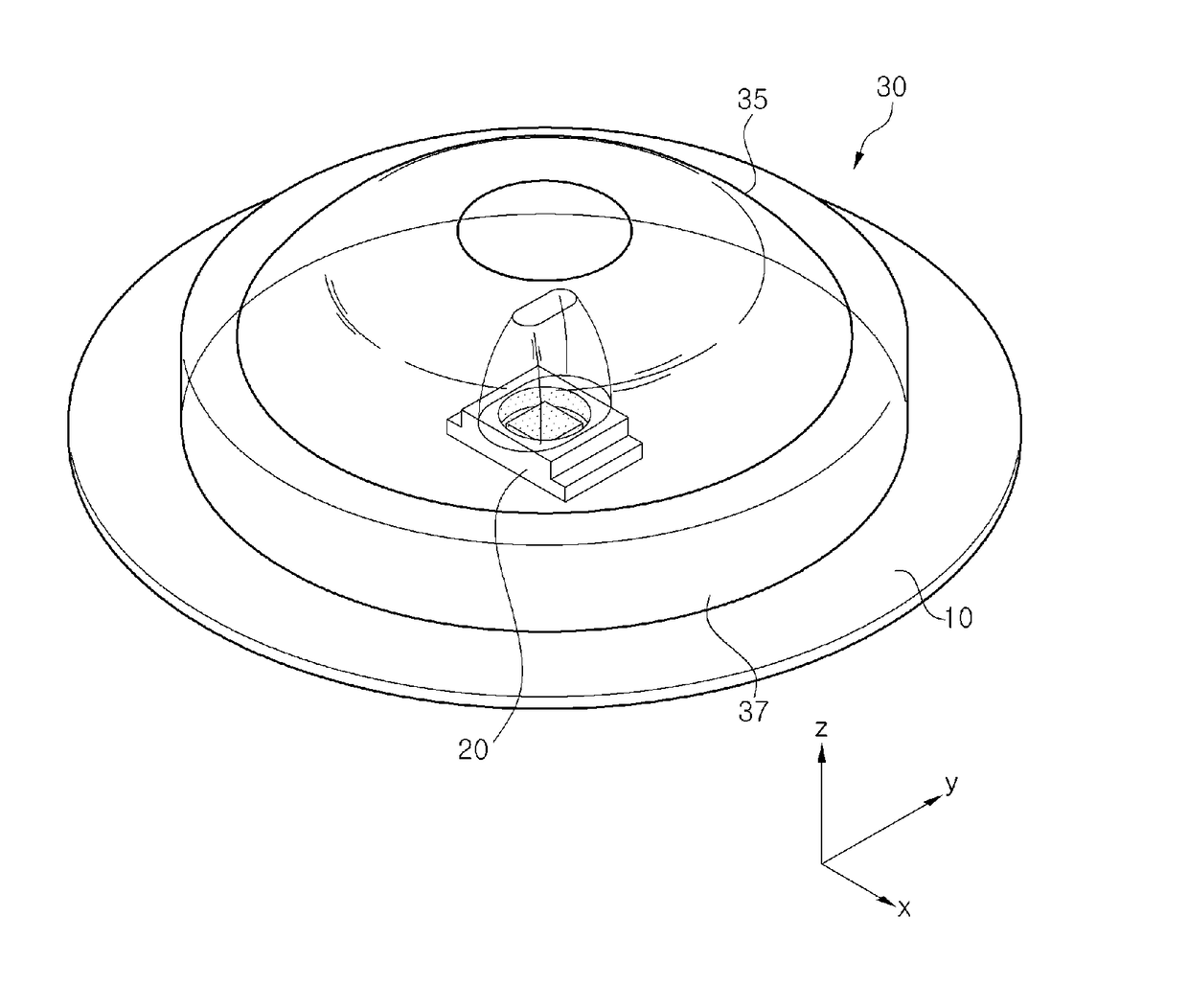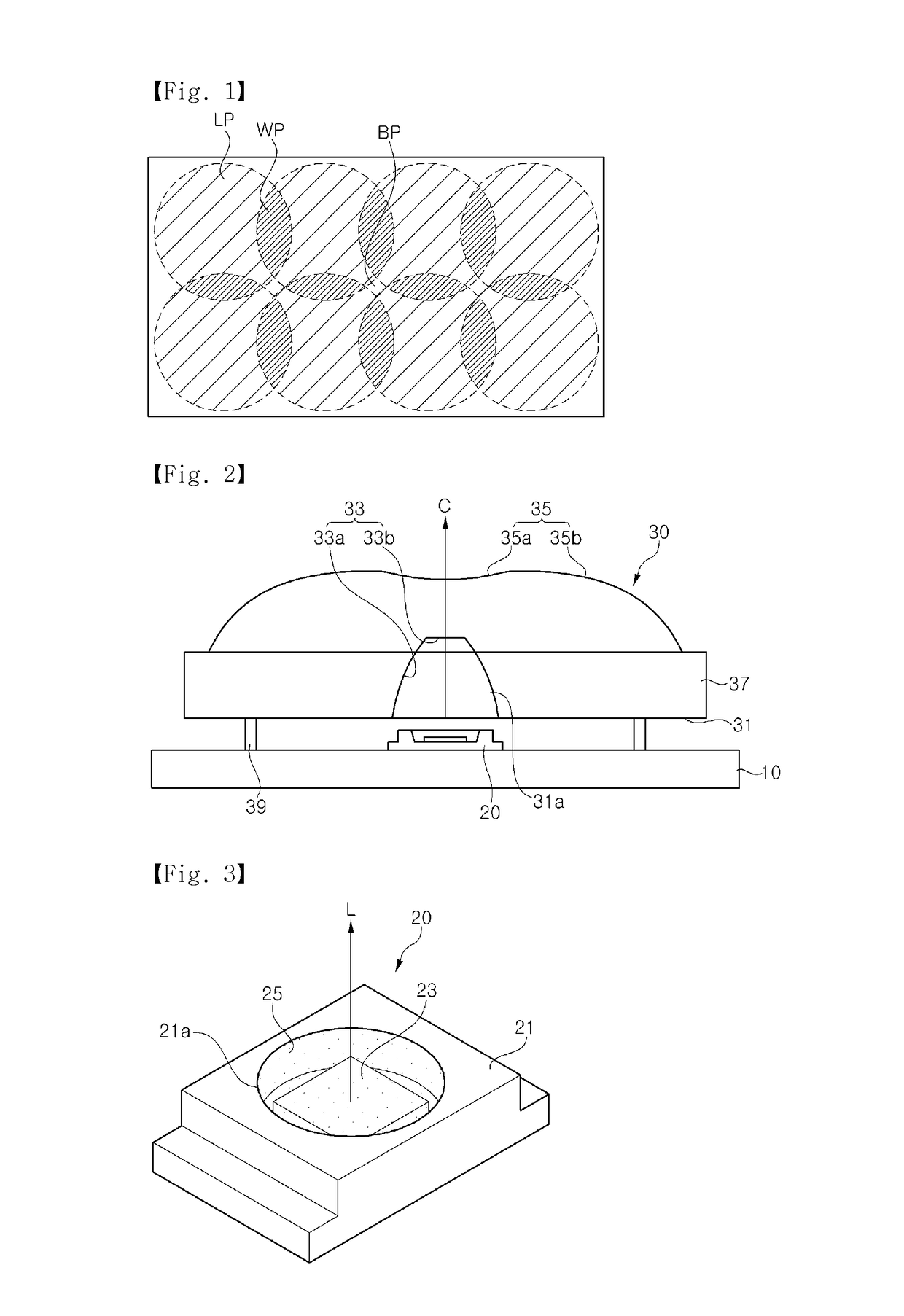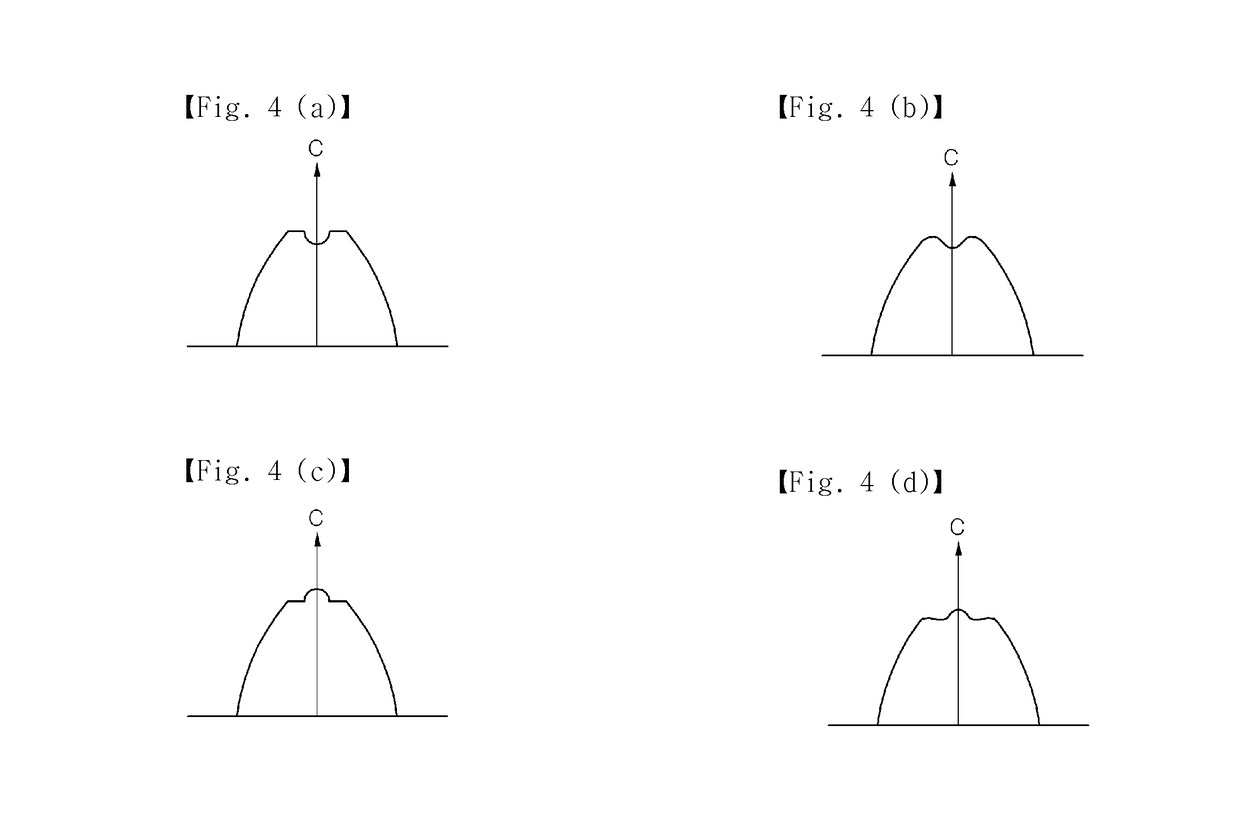Light emitting module and lens
a technology of light-emitting modules and lenses, applied in the direction of instruments, lighting and heating apparatus, semiconductor/solid-state device details, etc., can solve the problems of increasing power consumption, limiting the implementation of high-quality picture quality, and the difference in contrast of edge-type backlights, etc., to achieve uniform surface light source, easy to fabricate lens, and easy to achieve the effect of lens fabrication
- Summary
- Abstract
- Description
- Claims
- Application Information
AI Technical Summary
Benefits of technology
Problems solved by technology
Method used
Image
Examples
Embodiment Construction
[0061]Exemplary embodiments of the present invention will be described below in more detail with reference to the accompanying drawings. The present invention may, however, be embodied in different forms and should not be construed as limited to the embodiments set forth herein. Rather, these embodiments are provided so that this disclosure will be thorough and complete, and will fully convey the scope of the present invention to those skilled in the art. Throughout the disclosure, like reference numerals refer to like elements throughout this disclosure.
[0062]FIG. 2 is a schematic cross-sectional view for describing a light emitting module according to an embodiment of the present invention, and FIG. 3 is a perspective view for describing a light emitting device used in the light emitting module.
[0063]Referring to FIG. 2, the light emitting module includes a printed circuit board (PCB) 10, a light emitting device 20, and a lens 30. Although the PCB 10 is partially illustrated, a pl...
PUM
| Property | Measurement | Unit |
|---|---|---|
| height | aaaaa | aaaaa |
| diameter | aaaaa | aaaaa |
| distance | aaaaa | aaaaa |
Abstract
Description
Claims
Application Information
 Login to View More
Login to View More - R&D
- Intellectual Property
- Life Sciences
- Materials
- Tech Scout
- Unparalleled Data Quality
- Higher Quality Content
- 60% Fewer Hallucinations
Browse by: Latest US Patents, China's latest patents, Technical Efficacy Thesaurus, Application Domain, Technology Topic, Popular Technical Reports.
© 2025 PatSnap. All rights reserved.Legal|Privacy policy|Modern Slavery Act Transparency Statement|Sitemap|About US| Contact US: help@patsnap.com



